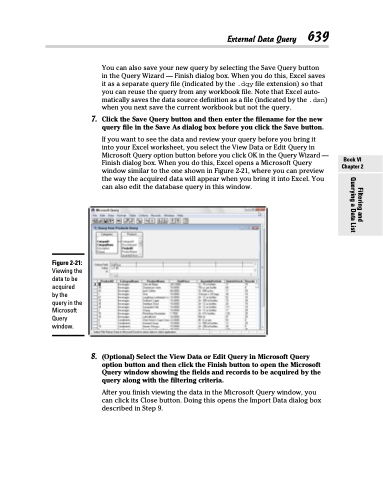Page 657 - Excel 2013 All-in-One For Dummies
P. 657
You can also save your new query by selecting the Save Query button
in the Query Wizard — Finish dialog box. When you do this, Excel saves it as a separate query file (indicated by the .dqy file extension) so that you can reuse the query from any workbook file. Note that Excel auto- matically saves the data source definition as a file (indicated by the .dsn) when you next save the current workbook but not the query.
7. Click the Save Query button and then enter the filename for the new query file in the Save As dialog box before you click the Save button.
If you want to see the data and review your query before you bring it into your Excel worksheet, you select the View Data or Edit Query in Microsoft Query option button before you click OK in the Query Wizard — Finish dialog box. When you do this, Excel opens a Microsoft Query window similar to the one shown in Figure 2-21, where you can preview the way the acquired data will appear when you bring it into Excel. You can also edit the database query in this window.
External Data Query 639
Figure 2-21:
Viewing the data to be acquired by the query in the Microsoft Query window.
8. (Optional) Select the View Data or Edit Query in Microsoft Query option button and then click the Finish button to open the Microsoft Query window showing the fields and records to be acquired by the query along with the filtering criteria.
After you finish viewing the data in the Microsoft Query window, you can click its Close button. Doing this opens the Import Data dialog box described in Step 9.
Book VI Chapter 2
Filtering and Querying a Data List


